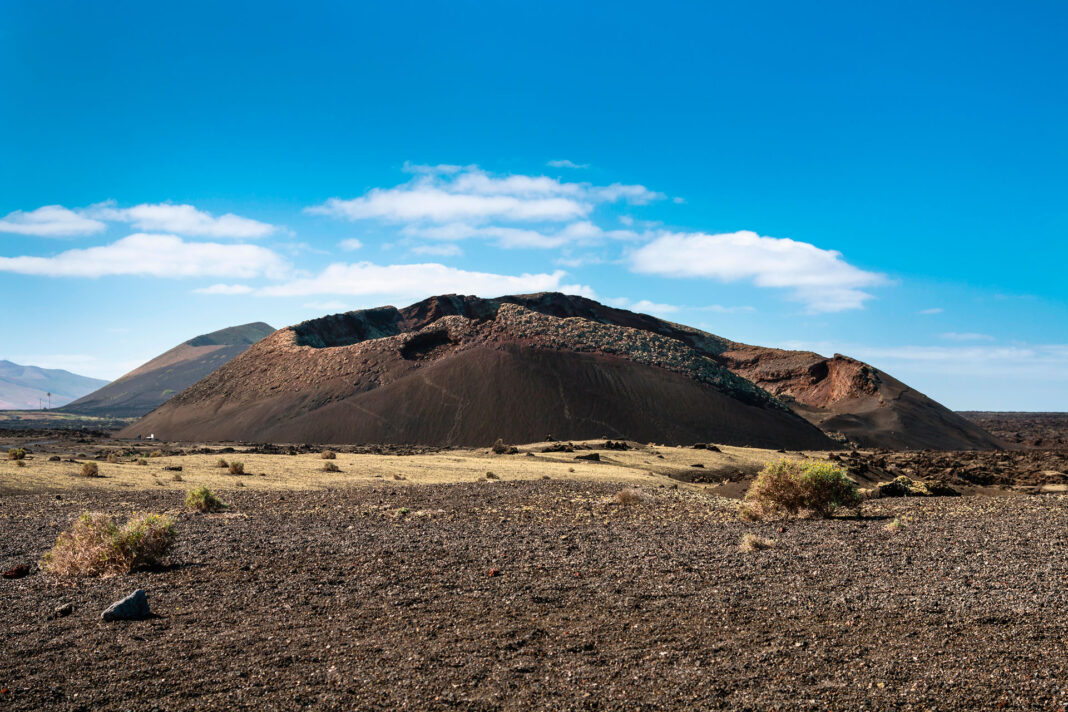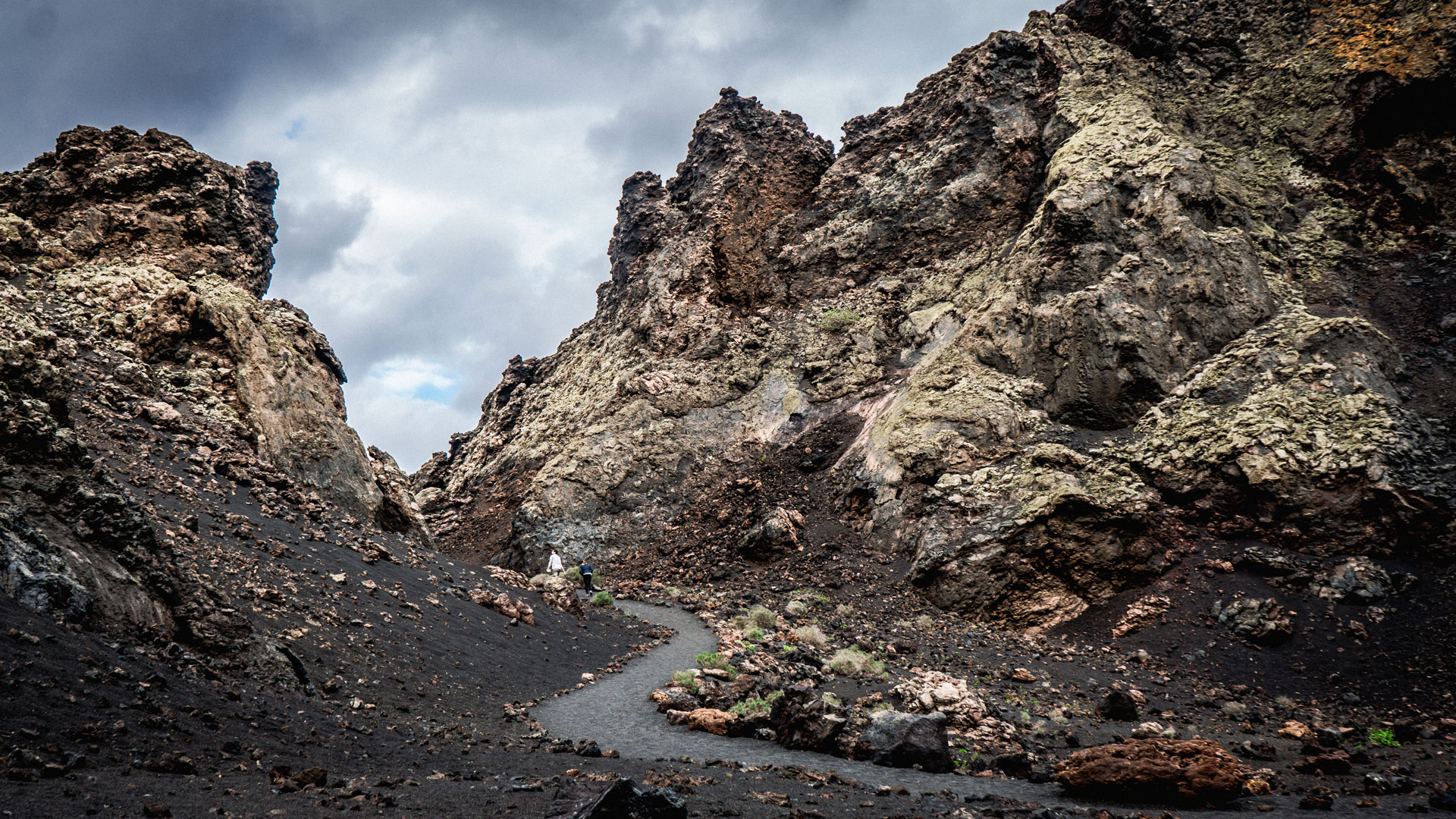The Cuervo Volcano was the first crater to be formed in Timanfaya, marking the start of six consecutive years of eruptions that would transform Lanzarote. This volcano is particularly remarkable, not only for its natural beauty but also for its unique resemblance to a broken glass goblet and its dramatic surroundings. It is set in an apocalyptic landscape of contrasts that’s at once rugged with twisted lava flows, yet gentle, with smooth slopes of volcanic ash. It is a landscape that, three hundred years later, is covered with a thin blanket of green lichen that shows how nature is coming alive once more.
What truly sets this volcano apart is the fact that visitors can step inside the caldera for a fascinating and unique experience. It is a comfortable twenty-minute walk (1.26 km) from the car park, along a marked path that visitors must stick to. There’s also a 1.9 km walk around the perimeter which affords stunning views surrounding landscape.
Caldera de los Cuervos, the real name of this crater, is located between the Timanfaya National Park and La Geria. It stands 388-metre tall, and as it is not completely round, it measures just under four hundred by two hundred metres. It forms part of the Parque Natural de los Volcanes, which is the peripheral area of Timanfaya National Park. It comes under the umbrella of the Canary Islands Network of Protected Natural Spaces and is also listed in Lanzarote’s Geopark, as Geosite VC007, Timanfaya Lavas.
Lanzarote’s candidacy to become a Geopark was supported by considerable investment in restoration, signposting, route marking, as well as installation of information panels which provide useful details about the surrounding geology, volcanoes and environment. Having access to this information greatly enriches the visitor experience.
Caldera de los Cuervos hosted some spectacular concerts as part of the Visual Music Festival that, for many years, brought leading international figures in the world of alternative music, such as Brian Eno, to Lanzarote at the end of the eighties.




